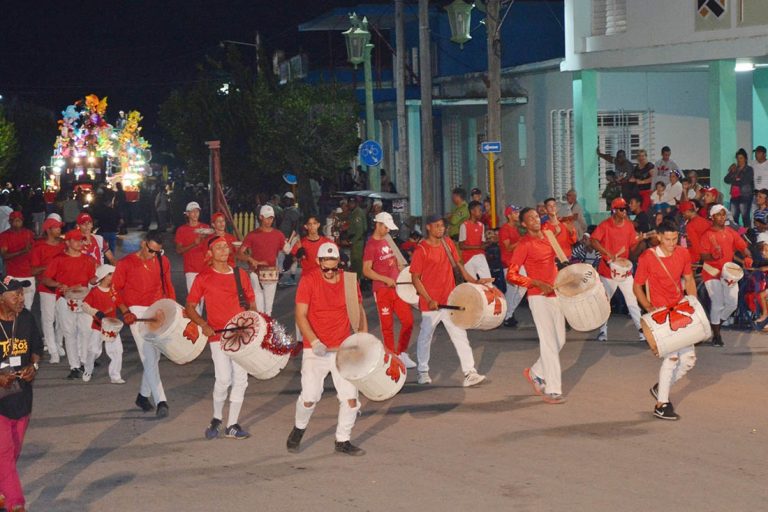«At the end of the night, after the ruffles and quilts walks, where the most important thing is to compete in beauty and attire, the troupes came out, which is the most beautiful part of the fun and that days before San Juan they have rehearsed some dance now seriously now jocular.
Over there come the Horacios, over here the Gitanas, beyond the Guajiros or the Marineros or any other uniformed group with their competent musicians ready to dance. ” (Ortiz, 1930)
About its origins…
In this way, the great Fernando Ortiz makes reference to one of the most recognized celebrations of the City of Waterpots, the San Juan Camagüeyano. Its roots lie in European countries such as France, Germany, Norway, Estonia, Italy, and Spain.
In these nations festivals were held to favor the harvesting of crops, to ward off witches and livestock diseases; for this they built bonfires and danced around them on the eve of June 24th.
Camagüey city, livestock par excellence, began to celebrate San Juan during the 18th century. It reached its greatest splendor around 1827, being considered for a time the most notable in Cuba and achieved international prestige.
In 1836 the activities began with the Reading of the City Council Proclamation where the code of conduct is explained to the masses, eager to start of the festivities. The years in which it coincides with Corpus Christi, this religious procession takes place first and then all the festivities of San Juan with a markedly profane character.
Customs and legends
One of the distinctive elements was the food that is typical of this celebration, where gastronomy wore the colors of the incipient “criollismo”. During the colony, roast pork, cassava, rice with chicken and salpicón (a kind of cold cuts made of cucumber, pineapple, peppermint, plum leaves, minced meat, oil and vinegar) were served and for dessert, curd with honey. As time went by, the ajiaco from Camaguey took center stage at the table.
In the early years of San Juan, one of the greatest attractions was the parade on horseback with its tails and braided manes, which was held for the last time in 1819.
The assault was also a custom of these parties: a group of friends made an announced visit to a certain house, in order that the hosts would welcome them with a table overflowing with food and drinks. Men called Juan were serenaded or visited at their homes by surprise.
In these celebrations a state of confusion was created such that both the ecclesiastical and governmental authorities were the victims of various taunts in very bad taste. One of the worst examples is the case of Josefa Jáuregui, wife of the Intendant of the territory in 1817, a case taken to the instances of the Governor Captain General of the Island and even to the Spanish Court.
For issues like that, several restrictions were implemented for this type of ridicule during the festivities, but the people always found a way to get around these orders. They wore tablecloths and curtains that allowed them to cover the entire body and do any kind of evil things. In conclusion, humor could not be repressed.
The San Juan was identified with the historical moments that were happening. During the years 1942 and 1945 it was suspended due to the events of the World War II. After the revolutionary triumph, the Chinese palaces, the conquest and the space travel of Arnaldo Tamayo were very famous.
Perhaps the tradition that the people of Camagüey remember the most in each San Juan are the rains that accompany them, eventuality that do not stop the inhabitants from enjoying the festivities.
Bibliography
Feliú, V. Cartografía de la memoria. Fiestas populares tradicionales e integración latinoamericana. Bolivia.
Salina Pérez, L. Propuesta de proyecto de intervención sociocultural para la revitalización de la parranda como práctica cultural en el Consejo Popular Mordazo del municipio de Santo Domingo desde el principio del autodesarrollo comunitario. (Trabajo de Diploma). Facultad de Ciencias Sociales. Universidad Marta Abreu. Villa Clara.
Translated by: Aileen Álvarez García






